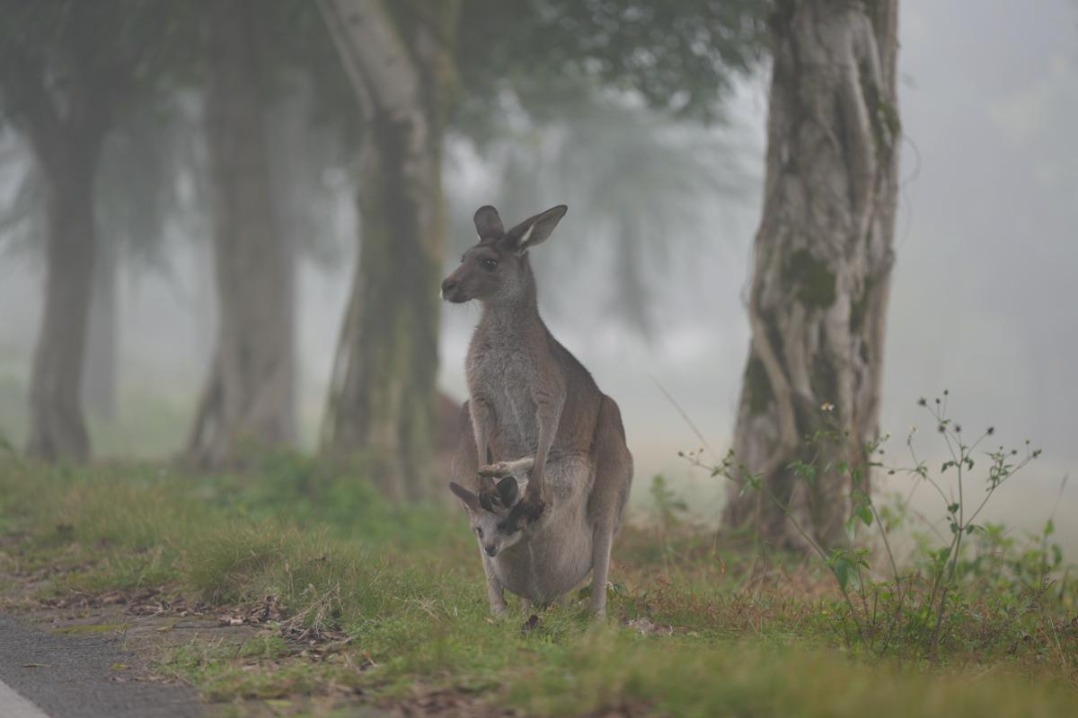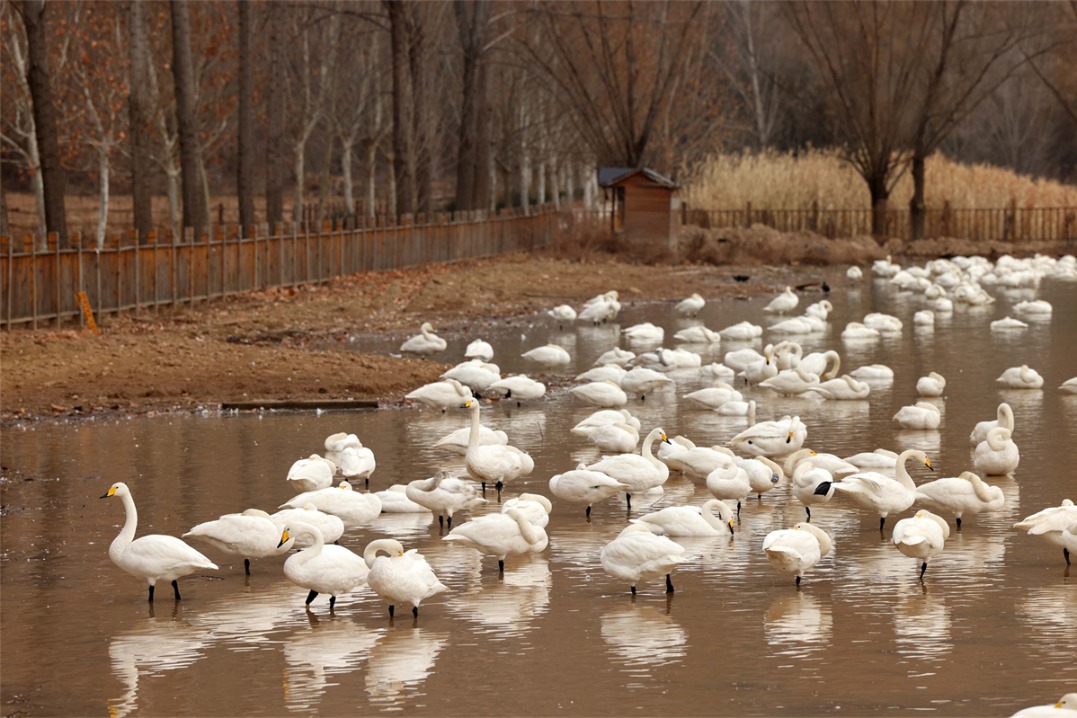Shanghai learning to live with its raccoon dogs

A stable population of raccoon dogs in Shanghai communities is a positive signal that residents and wild animals may be able to achieve long-term coexistence, a new survey has shown.
Led by the Shanghai Forestry Station, Shan Shui Conservation Center and a biology research group at Fudan University, the latest study — the second of its kind — was conducted this summer in 90 communities in the city's Songjiang, Qingpu and Minhang districts.
The results showed that compared with last year, the expansion of raccoon dogs in Shanghai has slowed, and the density of the nationally protected animal settling in neighborhoods has decreased.
Efforts made
To some extent, the rising population of wildlife in the city may reflect Shanghai's efforts to improve its ecological environment. However, the expansion of wildlife also brings rising concerns about potential conflicts with humans.
"The decline in densities and encounters of raccoon dogs in communities is a positive change, showing that the wild raccoon dog population is moving in a manageable direction, as well as increasing the likelihood of long-term coexistence between in-town wildlife and humans," said Wang Fang, a researcher at the School of Life Sciences at Fudan University.
The positive change has not come without reason. Over the past year, the city and communities have been making great efforts to make the "coexistence" happen.
According to a study conducted last year, the raccoon dog population in Shanghai was estimated to be between 3,000 and 5,000. The density of raccoon dogs in communities was closely related to neighborhood management. The improper feeding of stray cats and random disposal of kitchen garbage, for instance, can double or even triple the number of raccoon dogs in a residential area as it's easier for wild animals to get more food.
Given this, communities and local authorities have taken solid actions over the past year. In addition to encouraging the proper disposal of kitchen waste, they also set up notice boards and called on residents to only feed stray cats at a specific time and setting.
More importantly, they have been continuously working to popularize knowledge about raccoon dogs and foster the residents' understanding of wildlife by promoting brochures, picture books, documentaries, reminders, meetings and more.
"The perception of wildlife is a key factor that influences residents' attitudes to them. In many cases, their fear of wildlife comes from a lack of understanding," said Wang.
Wang told China Daily that his team talked to over 1,000 residents in the past two years, and he found that the majority of them are actually quite tolerant of wild animals in their neighborhoods, on the condition that the animals neither carry infectious diseases nor attack humans.
"With enough information and knowledge about wild animals offered, citizens' tolerance of them in communities will improve rapidly and stably," said Wang.
His team and local authorities started carrying out extensive disease detection on raccoon dogs in communities from June to August last year. They took over 100 samples from almost all the areas where raccoon dogs were spotted, and proved these animals were free of infectious diseases such as COVID-19, rabies and hepatitis.
"The detection results also contributed much to residents' attitude change toward raccoon dogs living around them," said Wang, noting that such detection will become routine work in monitoring wild animals in the city.
Wang values the active citizen participation in the study, which he thinks has directed their efforts toward many unimagined aspects.
Future path
Yang Mengqi, a 32-year-old in Shanghai, was one of the volunteers joining Wang's last two studies. Yang took part in the data collection section, mainly by visiting and searching for raccoon dogs in communities, as well as talking to residents and security guards.
"Personally, I like animals and have also been keeping an eye on nature, and so have my teammates. I did not expect such wildlife to be so close to me in Shanghai. It is interesting and meaningful to get involved in the study and contribute to the city's exploration on the coexistence of wildlife and humans," said Yang.
A growing number of wild animals have been spotted in cities in recent years, raising public concerns about conflicts with humans. Exploring their coexistence will be a long-term task, Wang noted.
Back when raccoon dogs were thriving in communities, local authorities attempted to guide them back to natural environments such as forests and parks, but failed — they soon found their way back to communities.
"It is a natural process for animals to get into cities. Take raccoon dogs as an example: It is easy for them to find warm places, food, water, green spaces in the communities. Hence they tend to choose to stay rather than go back to mountains or forests. It will be very hard to reverse the process," said Wang.
However, there are still efforts that the city and citizens can make to maintain peaceful coexistence.
"Wild animals boast various 'personalities' as well — some of them tend to get close to humans, while some prefer environments with few human activities. If we can provide them with more diverse and complex living environments, we may see more possibilities in such 'coexistence', offer them more habitation options and thus better protect the cities' biodiversity," Wang added.
Currently, Shanghai is accelerating the construction of an ecological park belt circling the city. The park belt follows the 98-kilometer green belt of the Outer Ring Road and connects 10 green areas and 17 ecological interval zones, according to the 2021-2035 Shanghai ecological space blueprint.
- US defense policy act fuels Taiwan tensions
- New Year holiday to bring peak in travel
- China's top 10 sci-tech news events unveiled
- Over 700 generative AI large model products complete filing in China
- Beijing accuses Lai of 'kowtowing' to US
- Hong Kong's global standing boosted with increasing presence of intl organizations: justice secretary





































